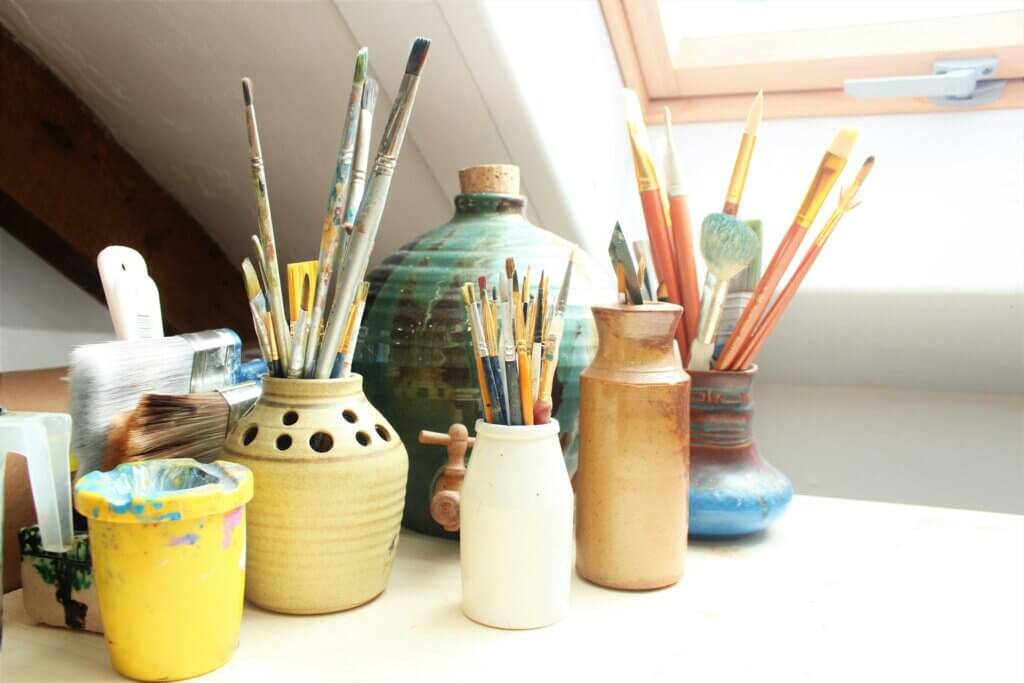Relocating an art studio can be a challenging endeavor, given the delicate and often expensive nature of art supplies, equipment, and works in progress. However, with careful planning and attention to detail, you can move your studio efficiently and safely. Here’s a guide on how to relocate your art studio effectively.
1. Plan Ahead for Relocating your Art Studio
Start by planning your move well in advance. Create a timeline that includes key tasks such as packing, organizing transportation, and setting up your new space. Consider how much time you’ll need to pack different items, especially fragile or valuable pieces. It’s also essential to think about the layout of your new studio—having a clear idea of where everything will go can streamline the unpacking and setup process.

2. Inventory and Organize
Before you start packing, take an inventory of everything in your studio. This includes art supplies, tools, equipment, and finished or in-progress artworks. Categorize items based on their type and fragility. For example, separate paints, brushes, and canvases from more delicate items like sculptures, glassware, or electronics.
This inventory will not only help you stay organized during the move but also ensure that nothing is misplaced or forgotten. It’s also useful for insurance purposes, especially if you’re transporting valuable pieces.
3. Use Proper Packing Materials
Invest in high-quality packing materials to protect your items during the move. For paintings and canvases, consider using custom-sized boxes or cardboard corners, along with bubble wrap or packing paper. Sculptures and delicate items should be wrapped in multiple layers of bubble wrap and placed in sturdy, well-padded boxes.
For smaller items like brushes, paints, and tools, use compartmentalized boxes or storage containers to keep them organized and protected. Label all boxes clearly to ensure that they are handled appropriately during the move.
4. Consider Specialized Transportation
Depending on the size and value of your artwork and equipment, you may need to consider specialized transportation. For particularly valuable or fragile items, hiring a moving company that specializes in art and often move large items can provide peace of mind. These professionals have the expertise and equipment necessary to handle delicate and high-value items with care.
If you’re moving locally and choose to transport your items yourself, make sure your vehicle is suitable for the job. Ensure that larger items are securely fastened, and use blankets or padding to prevent movement and damage during transit.
5. Prepare Your New Studio Space
Before you move, prepare your new studio space to accommodate your needs. Ensure that the space is clean, well-lit, and has adequate ventilation. Think about the placement of your workstations, storage areas, and any specific requirements for lighting or electricity.
If possible, move and set up larger pieces of equipment first. This allows you to arrange the rest of your studio around these items, making the setup process smoother.
6. Unpack and Organize Thoughtfully
When you arrive at your new studio, take your time unpacking and organizing. Start with the essentials—items you use daily or that are most critical to your work. Gradually unpack less essential items, ensuring that everything is placed in a logical and accessible location.
As you set up, consider the workflow in your new space. Arrange your tools, supplies, and equipment to support your creative process, making adjustments as needed to optimize your work environment.
7. Reconnect with Your Creative Flow
After the physical move is complete, take some time to reconnect with your creative flow in the new space. Spend time organizing your materials and getting a feel for the new environment. It might take a few days or weeks to adjust, but creating in your new studio should become just as comfortable as it was in your previous one.
Conclusion
Relocating an art studio requires careful planning, proper packing, and thoughtful setup. By following these steps, you can ensure that your artwork, supplies, and equipment are moved safely and efficiently, allowing you to quickly settle into your new creative space and continue producing art without disruption.





